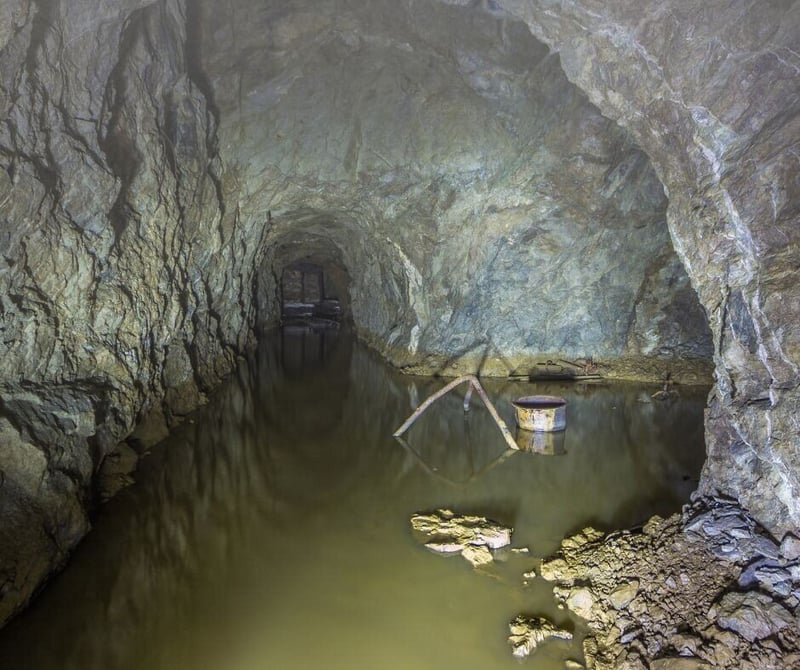Torrential downpours and scorching heat - how engineers can protect mine infrastructure
Written by: Jaco Viljoen Save to Instapaper
The threat of weather-related risks in mining operations across Africa was highlighted recently when Paladin Energy LTD’s share price suffered an 11.6% decline after withdrawing production guidance at its Namibian Langer Heinrich mine following flood damage triggered by unseasonably heavy rainfall.
But this incident was just one in a growing trend of extreme weather events disrupting open-pit and underground mining operations, causing production delays, and compromising workers’ safety, company bottom lines, and shareholder confidence.
“This recent incident once again highlights the importance of engineering that accounts for the impacts of extreme weather,” says Jaco Viljoen, Project Director at TDS Projects Group. “Mining companies should be re-evaluating the purpose of existing infrastructure to determine whether it meets current engineering standards and has the durability to withstand evolving weather patterns. This is particularly crucial during the rainy season, when large parts of South Africa experience prolonged bouts of heavy rainfall, intermittently followed by extreme heat.”
Weather incidents can impact any mining operation with little warning – especially on the African continent, where climatic extremes range from intense heat to sudden cold. Torrential rainstorms, which are becoming increasingly frequent, pose a significant risk: they can flood open-pit mines and compromise the structural integrity of underground tunnels. Such events often force operators to divert valuable capital and manpower to manage water accumulation and restore safe working conditions.
In addition, scorching temperatures in desert and semi-desert regions of sub-Saharan Africa drive up energy consumption as mining operators work to cool underground environments – escalating operational costs and increasing the risk of heat-related health issues for workers.
“Halting operations at any mine due to adverse weather results in loss of revenue, impacts employee well-being, and triggers a ripple effect in downstream markets.” This applies not only to weather-related stoppages during the installation of new infrastructure, but also to the renovation and restoration of damaged assets, and any other efforts aimed at improving resilience to severe weather in the future.
Infrastructure designed for severe weather
Here, cutting-edge engineering solutions utilising time-saving design and implementation methods directly related to structures required to manage water, corrosion, and temperature extremes have become indispensable to long-term development plans. The involvement of specialised engineering service providers is no longer optional – it has become essential to ensure that mining infrastructure can withstand the increasing challenges posed by extreme weather.
While traditional engineering approaches remain vital, they often struggle to keep pace with the increasingly unpredictable and extreme climate conditions affecting mining operations across the continent. Instead, adaptive and targeted engineering strategies are essential. “Pre-erection of major installations, in particular, is a game-changer. It significantly reduces construction, assembly, and re-work time on-site, thereby narrowing the window for disruptions,” notes Viljoen.
Additionally, fabricating and pre-erecting in a controlled environment allows engineering firms to ensure greater consistency in quality, and roll out solutions efficiently.
“The second part to this equation is combining pre-erection with modular design solutions. This approach reduces construction time by breaking infrastructure into easy-to-transport and assemble segments, making construction faster and simpler for future expansion efforts.
“So, as weather conditions continue to change over time, we can add or replace certain components with parts better suited for their current circumstances.”
Ultimately, we all need to adapt to the reality of unpredictable weather and a constantly changing climate. Prefabricated modules, combined with a number of other normal mining functions such as continuous engineering assessments, could mitigate the risk associated with these related challenges.
“Engineering firms like TDS can assist with these setups where organisations scale or adapt infrastructure quickly to reduce weather-related downtime and secure survival,” he concludes.
Get new press articles by email
PR Worx is a leading, award-winning agency with over two decades of experience helping businesses grow through strategic marketing-communications. Established in 2001, the agency believes PR is more than media coverage—it's about building meaningful relationships with the right audience. With a strong track record across multiple sectors, PR Worx has delivered measurable results for hundreds of... Read More
Latest from
- The Hidden Art of Tracking and Trailing
- If your wallet could talk, it would scream
- Why Cheetah Conservation Is Really About Saving Entire Landscapes
- Ditch unhealthy year-end habits and feel better at work
- SA’s CEOs are deeply experienced – but lag on global exposure, report shows
- December housebreakings surge by 48% - Homeowners urged to take action
- Stop paying for failed solar systems - Here’s what South Africans need to know
- Weight-loss breakthroughs could shift the fight against diabetes in South Africa
- Why Knowing Your Investment Profile Matters More Than Chasing Returns
- The rise of AI in financial services - Balancing innovation and integrity
- Kruger National Park in High Demand as Safari Travel Booms
- Mpumalanga Tourism Gains Momentum Ahead of Festive Season
- Cybersecurity and Your Money - Why October Matters for Financial Safety
- “Bakkie-Brigade” Solar Installations Put South African Homes and Businesses at Risk
- The delicate art of skincare in cancer treatment and recovery
The Pulse Latest Articles
- Education Is The Frontline Of Inequality, Business Must Show Up (December 11, 2025)
- When The Purple Profile Pictures Fade, The Real Work Begins (December 11, 2025)
- Dear Santa, Please Skip The Socks This Year (December 10, 2025)
- Brandtech+ Has 100 Global Creative Roles For South African Talent (December 9, 2025)
- The Woman Behind Bertie: Michelle’s Journey To Cape Town’s Beloved Mobile Café (December 9, 2025)
